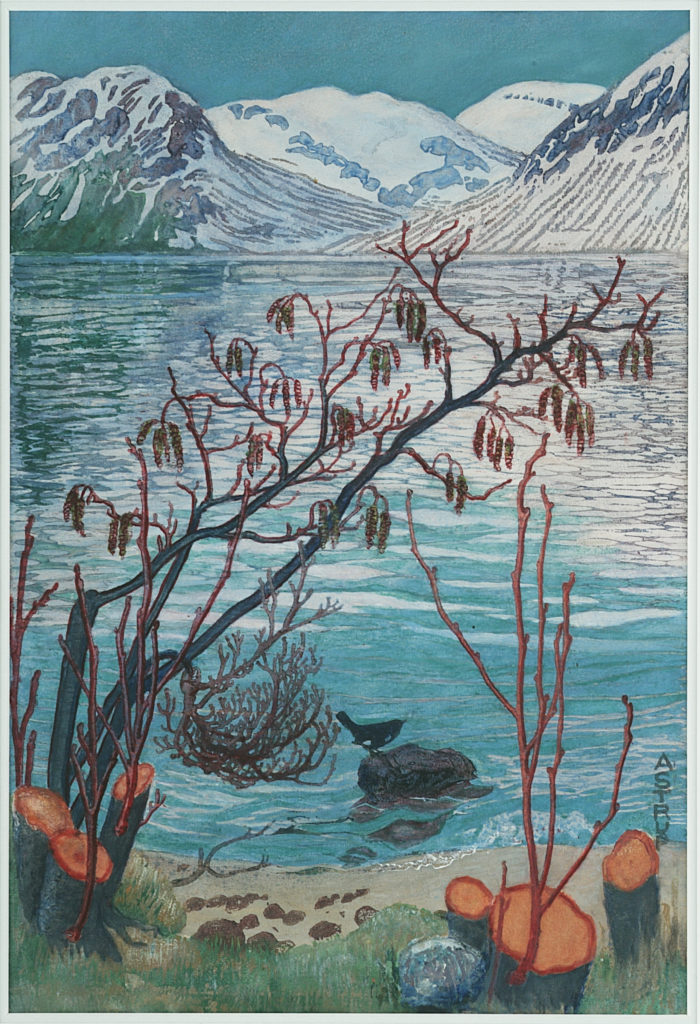Bird on a Stone

From the middle of the 19th century, Japanese art – and in particular the characteristic woodcuts of Hokusai and Hiroshige – was an important source of inspiration for many European artists. From the art metropolis of Paris, Japonism spread throughout Europe and reached even Nikolai Astrup (1880–1928), who lived and worked in Jølster, in the remote western reaches of Norway. If not before, he at least was given the opportunity to study Japanese woodcut when he was on a study tour in Paris in 1901. In a letter he recounts: I do not know if you are familiar with “the modern woodcut” – “coloured woodcut” and “black and white” woodcut – it is an art form that interests me greatly – it comes originally from Japan, but is adapted to a somewhat different form here in Europe, one that is more suited to our art. In this country, Munch and I are among the few who have tried our hand at this “modern woodcut”.
There are many sketches and drawings in which we can see how Astrup has copied directly from his Japanese models. Yet what is even more interesting, perhaps, is when he incorporates and transforms influences from Japanese art to become an integral part of his own visual mode of expression, as in Bird on a Stone, and many more of his woodcuts. We can see the influence in particular in Astrup’s emphasis on the surface character of the picture, in the decorative line drawing and the stylised idiom. It is not a question of a citation or imitation, but of a development of external impulses combined with a profoundly personal interpretation of the characteristic landscape of his native village.
OWG